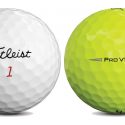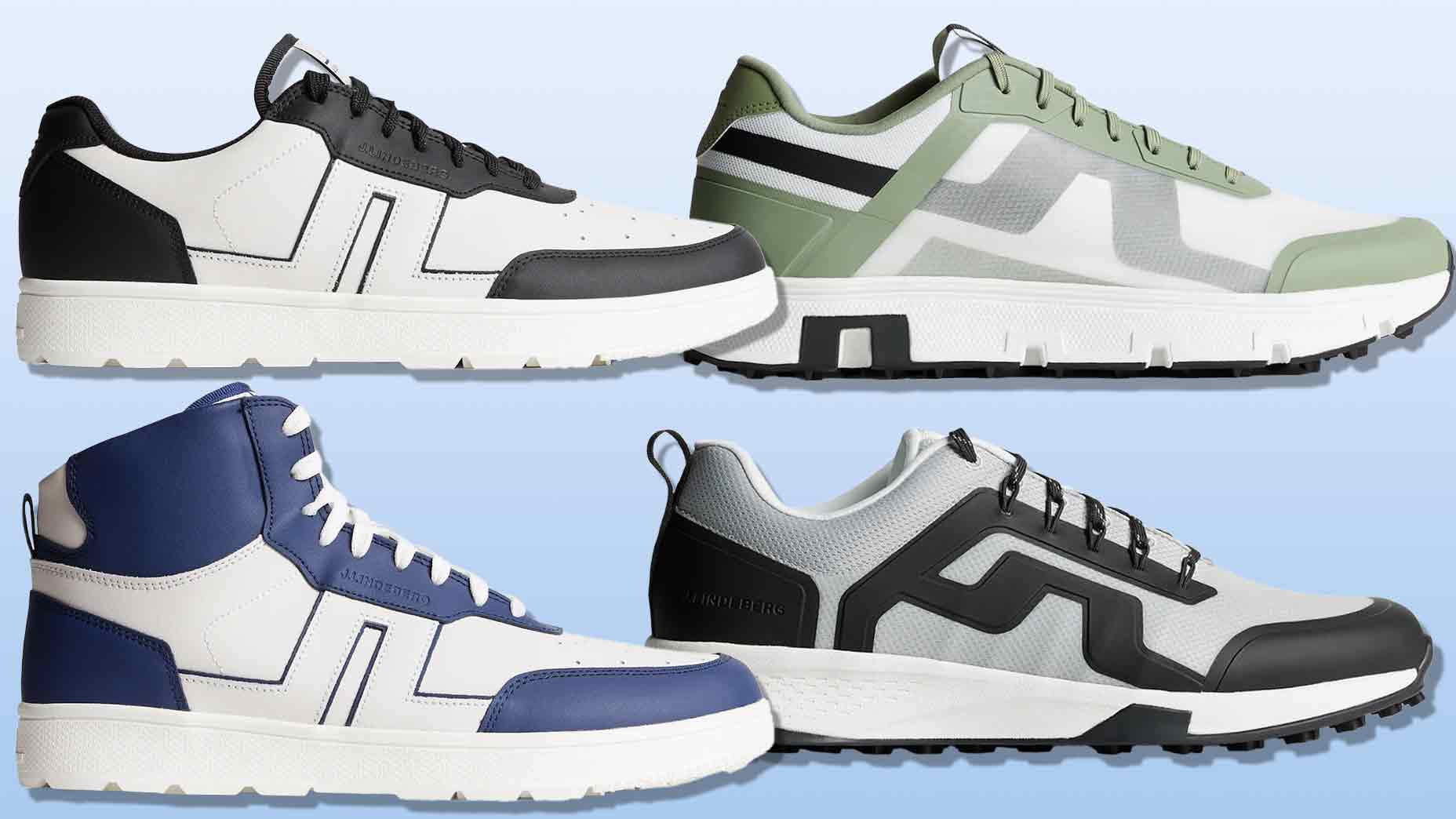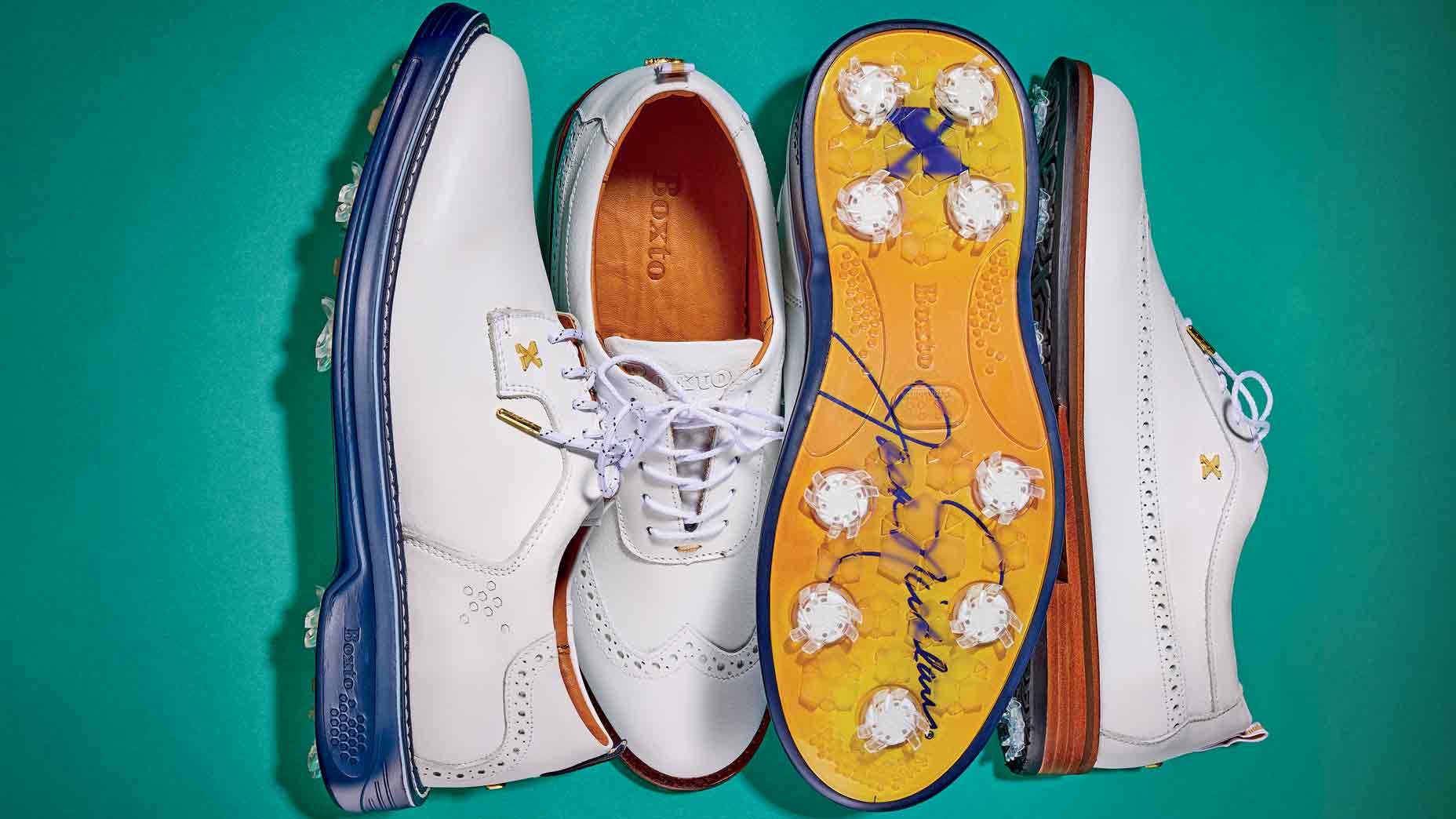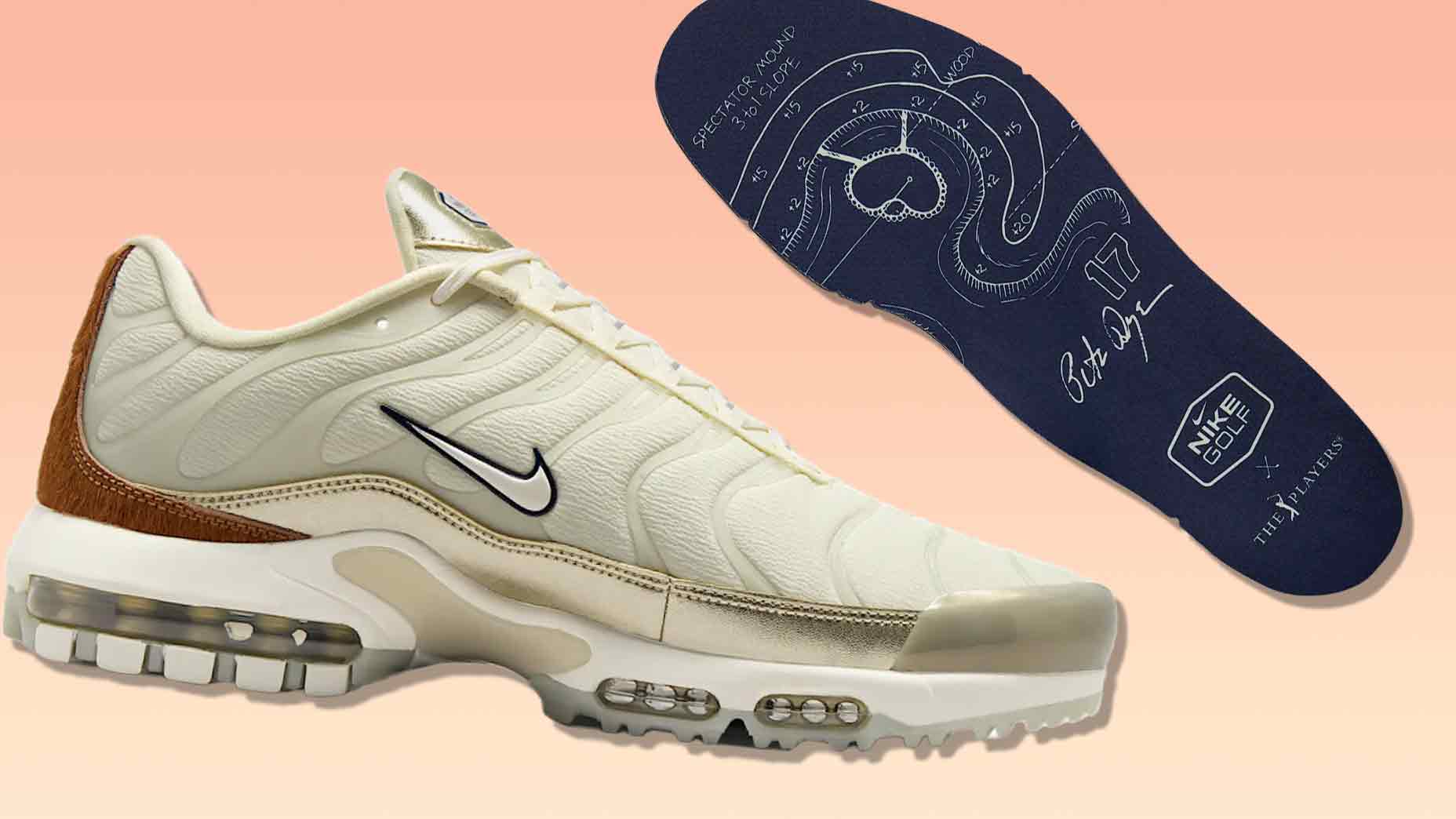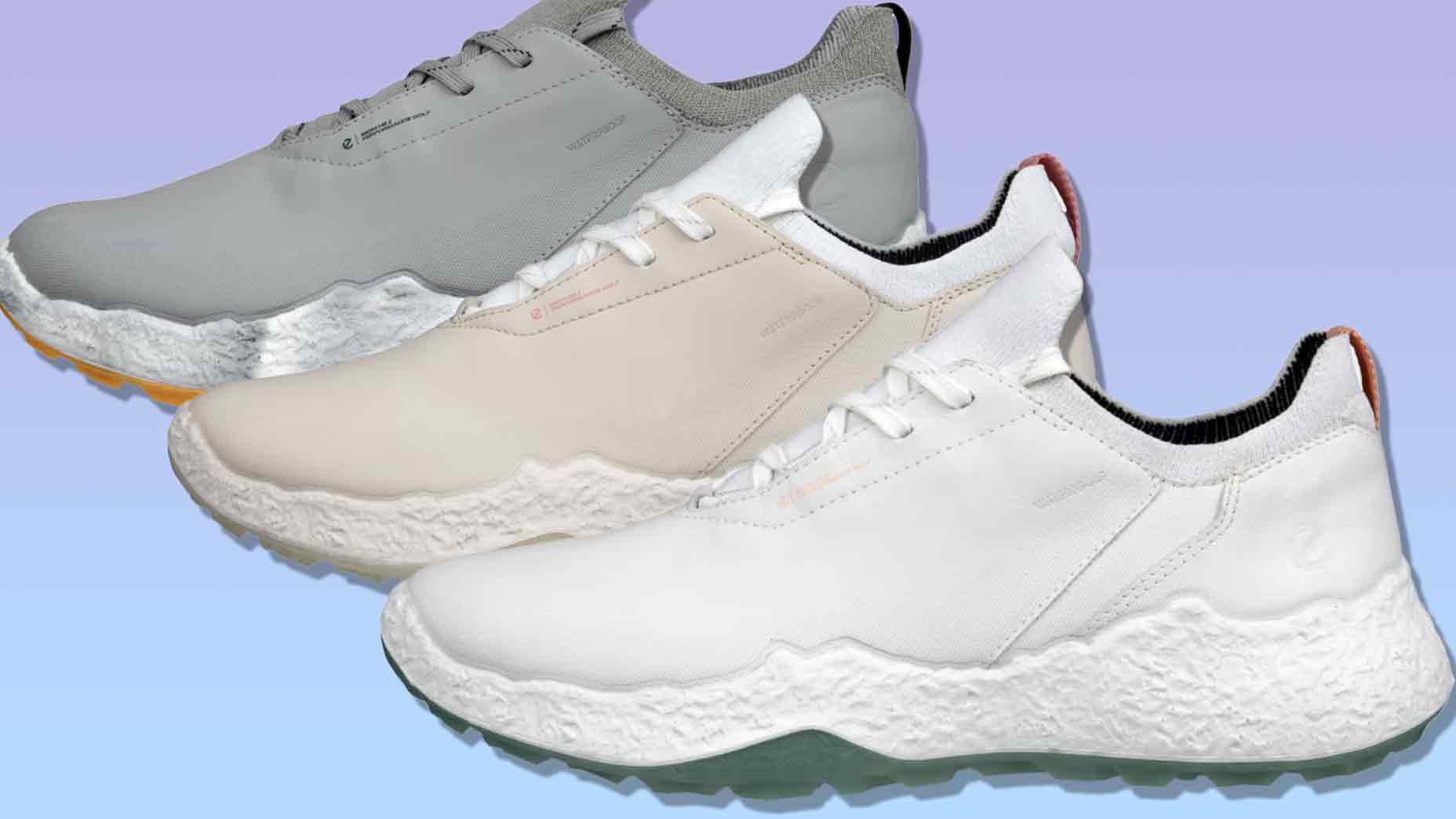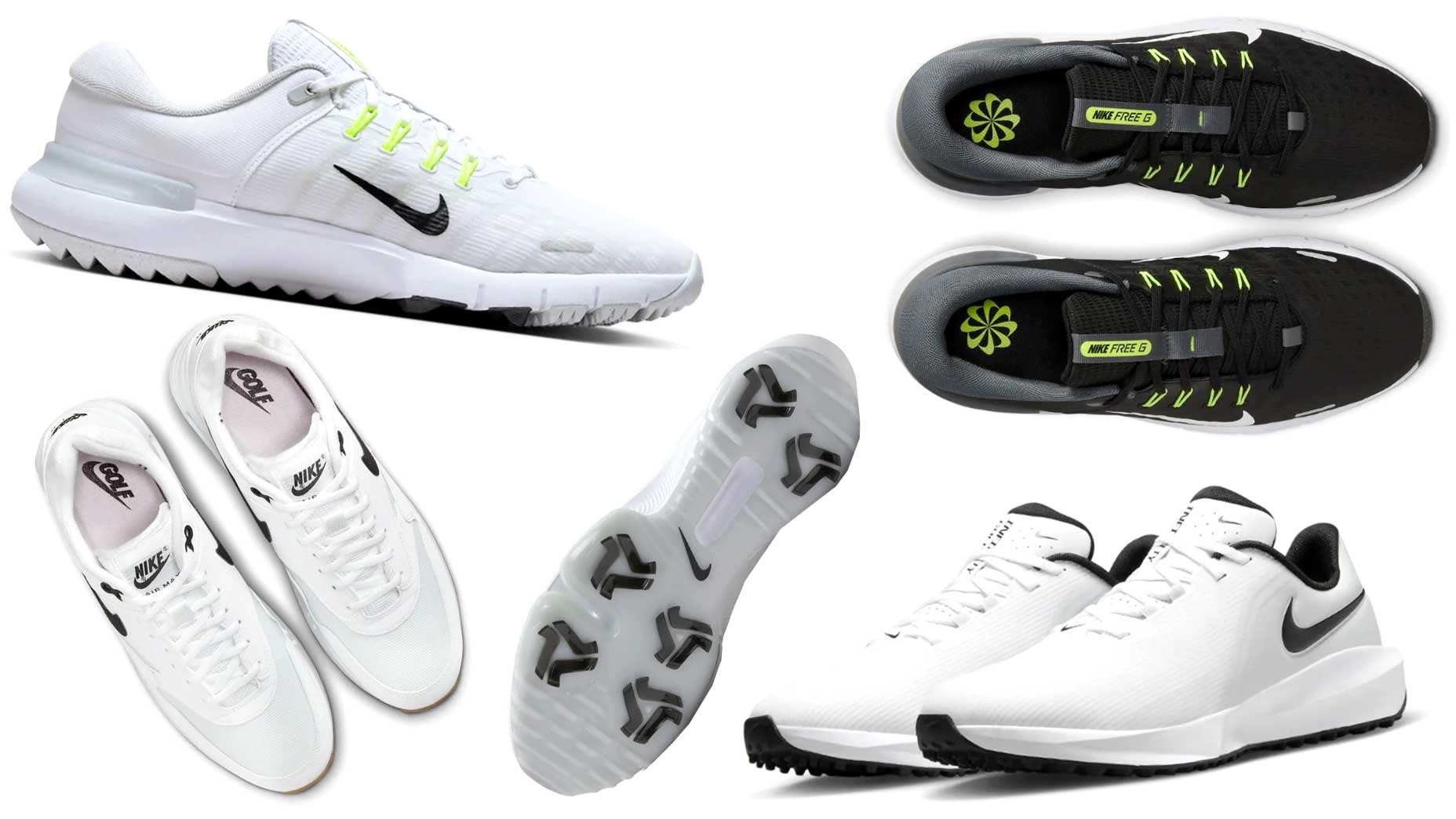Welcome to another edition of Yo, Gear Guy!, an interactive GOLF.com series in which our resident dimplehead (a.k.a., GOLF’s deputy editor of equipment, Mike Chwasky) fields your hard-hitting questions about clubs, fittings, gadgets, bounce, lofts, CG, MOI, and a bunch of other scary acronyms. This week he’s addressing if there are any differences between yellow and white Titleist Pro V1 golf balls, the best spikless golf shoes and more.
What’s the best spikeless shoe you’ve come across? – @Phallow84 on Instagram
I typically don’t like to call out specific products here as choosing the brand and model in almost any category is quite personal, however, I do have some suggestions when it comes to spikeless shoes. I made the switch a number of years ago for the sake of convenience but admittedly found many of the early spikeless shoes, while fairly comfortable, often lacked the level of support I prefer and also weren’t great on wet mornings. In my experience those days are long gone as the most recent spikeless offerings can fit just about anyone’s particular needs (including mine), so here’s my top three, all of which I own and wear:
FootJoy Pro/SL: These are about as good as it gets for comfort, support, grip, and waterproofing. Basically they’re Tour shoes without removable spikes, and it’s not surprising they’re one of the most popular shoes on the professional Tours. For me the Pro/SL truly makes spiked shoes unnecessary, however, I have found they run a little bigger than some other brands (I wear a half size smaller than my usual in them, but that’s just me).
Puma IGNITE NXT: These feature an admittedly much different style than the Pro/SL but are nonetheless extremely comfortable with plenty of support and traction in all types of conditions. I like what Puma’s been doing over the last number of years in terms of technology and dig the styling as well. Like the Pro/SL for me these run a bit on the bigger size.
Nike Roshe G: This pair is based on a standard model Nike running shoe, so I was highly skeptical of the Roshe G’s ability to function as golf shoes, particularly since they don’t really offer any added support over a standard sneaker and have what look like fairly minimal traction elements on the bottom. Plus they’re quite inexpensive, which doesn’t always inspire a lot of confidence in a golf shoe. As it turns out these are one of my favorite pairs and are fantastic on hot or dry days, extremely comfortable, and provide me with more than adequate traction.
Honorable mention: Adidas Tour360 XT Spikeless: I don’t actually have a pair of these, but I’ve worn the spiked version and find them to be one of the best all-around golf shoes available (you’ve seen DJ and a ton of other guys wear them on Tour). I’m assuming the spikeless version is just as good, but as I mentioned, I haven’t tried them yet.
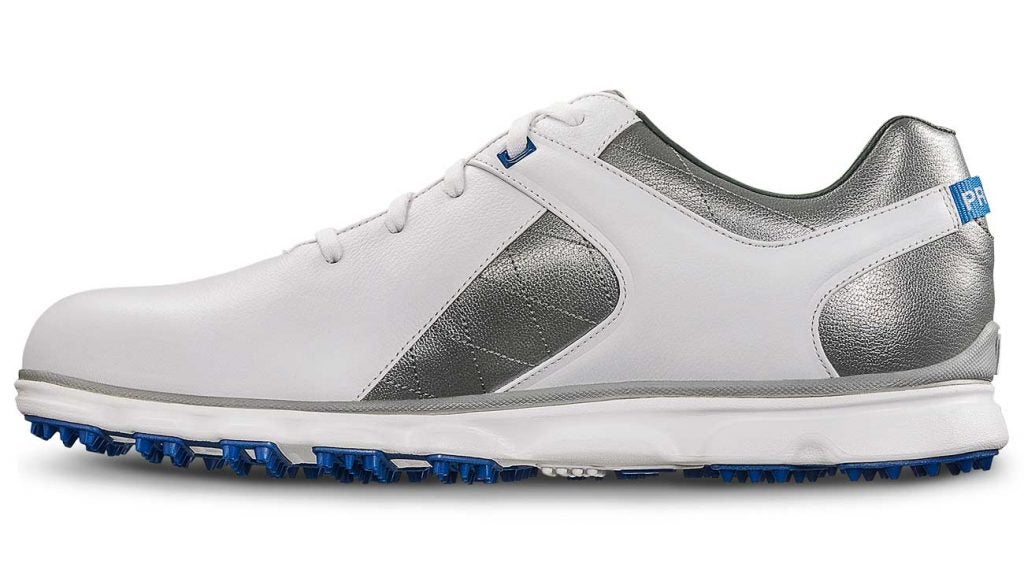
Titleist made headlines by introducing a yellow Pro V1. Is there actually anything different about the ball other than it being colored yellow? – Jason Tonno on Facebook
I know a lot of folks are probably wondering about this, and since I’ve been an avid yellow ball player for years (the visibility they offer really is superior), I thought I’d give a quick answer – no, the yellow Pro V1 and Pro V1x are absolutely no different in regard to performance than the white models.
If you knew how meticulous engineers at Titleist are when it comes to consistency and performance you’d understand that they had no choice but to make certain the colored models were EXACTLY the same as the white ones, and they did. We don’t have time to go into it here, but, believe it or not, producing a yellow Pro V1 that is indistinguishable from the white in terms of feel, performance, durability, and consistency, was much more complicated than you might imagine. Maybe we’ll get into it another time.
What are the best grips for a golfer that plays in all weather conditions? – @Jackc_1 on Instagram
By “all weather conditions” I assume you mean occasional bad weather, so I’m basing my recommendations on that premise. A good way to judge which grips are best for “all weather” performance, other than writing to us here at GOLF.com, is to watch a bit of a European Tour event. If you do you’ll notice that a good percentage of players have their sticks fitted with some kind of cord or half-cord grip, as these are really the best for both very hot and very wet conditions.
There are some other grips like Winn’s polyurethane Dri-Tac models that provide excellent all-weather performance, but in my experience Golf Pride’s Tour Velvet Cord (Tiger’s grip of choice) and MCC (New Decade MultiCompound), which features a cord top half and buffed lower half, are about as good as it gets. And if you’re really hardcore, I’d consider Golf Pride’s ZGRIP cord, which is their firmest model with the heaviest cord texture. I noticed several players including Paul Casey gaming the ZGRIP at Pebble Beach last week and wouldn’t be surprised to see a lot of them out at Riviera this week.
How much influence should I let what’s in a Tour players bag affect what I buy? – Joe Greenman on Facebook
Joe, you put me in a bit of a tough spot with this one as we do take a fair amount of advertising here at GOLF Magazine and GOLF.com from big OEM’s (original equipment manufacturers), just about all of whom spend a lot of money sponsoring star players in the hopes of influencing the golfing (and spending) public. That being said, I would suggest that that the gear played by Tiger, Phil, Rory, Rickie, and all the other world class players you see on TV should really not influence what you buy at all. I hate to state the obvious but unless you’re an extraordinarily talented amateur who practices regularly, works out every day, and swings your driver over 110 mph, you really don’t have the same needs as the guys on Tour.
However, I also wouldn’t completely discount the type of clubs and balls the big boys play. For example, Tiger’s a very fast swinger, yet plays a ball (Bridgestone’s Tour B XS) that features a slightly softer compression that the “X” model because he feels more spin and a soft feel around the greens is more valuable in terms of scoring than the added distance a firmer model would provide. Phil famously tinkers with his clubs and set makeup regularly and is currently gaming Callaway’s Rogue Sub Zero driver rather than the newest (and more advanced) Epic Flash Sub Zero because at the moment he’s hitting the Rogue a bit straighter. I can provide more examples, but the point is these guys take their gear choices seriously because that’s how they make their living and accordingly put plenty of time into experimentation, trial, and fitting. I’d suggest you do the same without worrying too much what your favorite player is gaming this week.


